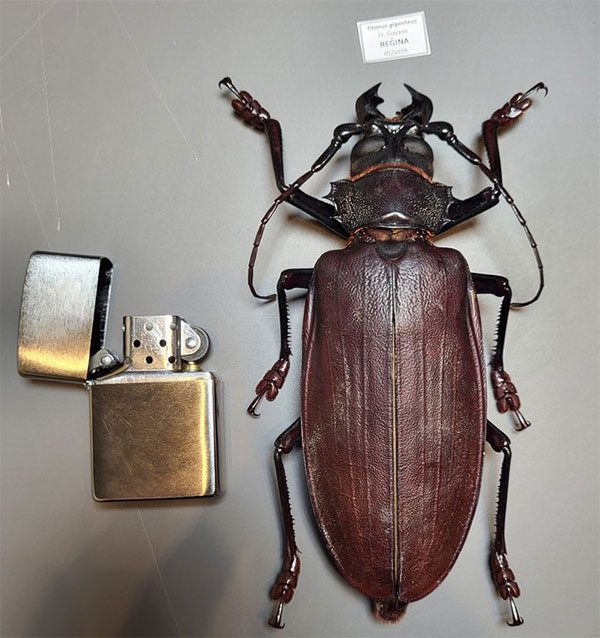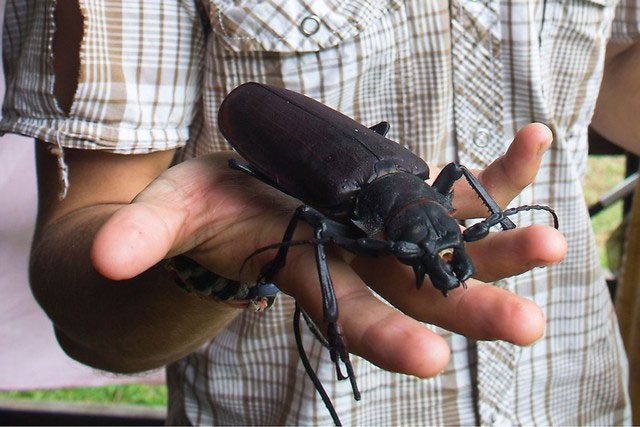Hidden in the humid tropical forests of South America is an enormous insect so large that many people would find it hard to believe it actually exists. Known as one of the largest flying insects in the world, the Titan beetle can easily snap a wooden pencil in half!
More commonly referred to as the Titanus giganteus or Titan Beetle, this giant insect can grow nearly 18cm in length, and its jaws are strong enough to cut a pencil in two.
Despite its terrifying size, it is completely harmless to humans. This insect hides in the dense tropical forests of South America and only emerges to find a mate. Surprisingly, the larvae of this creature have never been observed; however, scientists believe that the larvae could exceed 5cm in diameter and grow up to 30cm long.

A child holding a large male Titan beetle
By examining the large holes in dead trees, scientists believe that the larvae feed on decaying wood underground for several years before maturing. The adult male does not eat during its adult stage but requires energy to fly. This energy is derived from the reserves it has accumulated during its pupal stage to seek a mate.
The Titan beetle is so large that it lacks the energy to take off from the ground, so it must climb up a tree and launch itself from a branch to fly. Once airborne, they use their flight to search for partners while tracking pheromones (chemical signals released by individuals of the same species) carried by the wind.
Females wait for males to find them and lay eggs, which is why they are rarely seen. Although females also have wings, their heavy bodies have nearly completely lost the ability to fly.

Sharp spikes on their bodies ready to deter potential predators.
These beetles have some impressive defense capabilities. Their powerful jaws allow them to bite when threatened. The sharp spikes on their bodies are poised to ward off potential predators. Perhaps most surprisingly is their ability to hiss. They expel air through openings along their sides, creating a hissing sound. However, it is believed they will not attack unless provoked.
This species inhabits the dense forests of Brazil, Bolivia, Colombia, Ecuador, Guyana, and Peru, where locals try to shine flashlights to catch them at night.
Although primarily recognized for their nocturnal behavior, the compound eye structure of the Titan beetle suggests characteristics of daytime-active insects. The eyes have a certain arrangement where light enters each unit (ommatidium) as a single point. This creates a patchwork image by combining information from each part of the eye. Therefore, there is an interesting contrast between the Titan beetle’s nocturnal behavior and its compound eye structure that resembles day-active insects. However, researchers state they cannot draw any definitive conclusions based on the available information.

The larvae of this remarkable insect have never been found.
While Titan beetles are adults, they do not eat; instead, they rely on reserves from their pupal stage to fly and find mates, which is why these adults only survive for a few short weeks.
While many people try to avoid this fearsome creature, some tourists pay a lot of money to see this insect living in its natural habitat.
The largest Titan beetle ever discovered was 16.7cm long and was found in Guyana. A typical beetle can cost up to £400.


















































